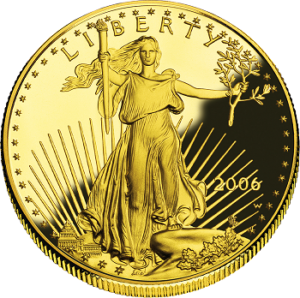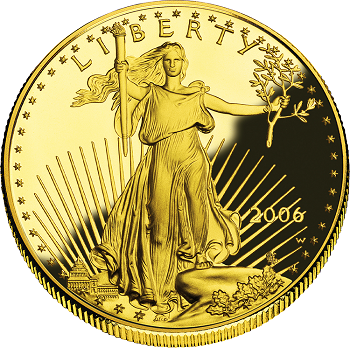submitted by jwithrow.
Click here to get the Journal of a Wayward Philosopher by Email
Journal of a Wayward Philosopher
A Golden Reset?
April 15, 2016
Hot Springs, VA
“I believe that banking institutions are more dangerous to our liberties than standing armies. If the American people ever allow private banks to control the issue of their currency, first by inflation, then by deflation, the banks and corporations that will grow up around them will deprive the people of all property until their children wake-up homeless on the continent their fathers conquered. The issuing power should be taken from the banks and restored to the people, to whom it properly belongs.” –Thomas Jefferson
The S&P closed out Thursday at $2,082. Gold closed at $1,226 per ounce. Crude Oil closed at $41.50 per barrel, and the 10-year Treasury rate closed at 1.78%. Bitcoin is trading around $430 per BTC today.
Dear Journal,
Last week we examined a potential path to the Great Reset triggered by the global adoption of negative interest rate policies (NIRP). The entry was not just speculation, however, but it was prompted by a report outlining a meeting in Manhattan between some major players in the world of finance and a source sitting at the nexus between government policy and the financial industry.
This meeting was not about the possibility of negative interest rates in the U.S., however. The unnamed source assumed NIRP was already baked into the cake. According to him it was not a matter of ‘if’, but ‘when’.
Instead, the meeting was about a plan that top monetary officials in the U.S. were considering as a means to regain control of the financial system should negative interest rates cause a run on paper currencies, including the U.S. dollar.
That plan, according to this source, was to re-establish the dollar’s convertibility to gold which would be accomplished by swapping the U.S. Treasury’s gold stock (248 million ounces) for all of the Treasury bonds on the Fed’s balance sheet ($2.4 trillion)… a golden reset.
Here’s the (paraphrased) reported justification:
The fiat monetary system is unraveling due to the extreme levels of sovereign debt that have accumulated globally, and the only way to prevent a collapse of the banking system is to impose negative interest rates. Negative interest rates will almost certainly cause major institutional investors to flee the system, however; indeed this is already happening. Many of those institutional investors are already taking significant positions in physical cash and gold. The only way to re-establish financial order is to integrate gold back into the system, but so much money has been created out of thin air that the price of gold will necessarily skyrocket. The source went on to suggest that governments would likely enact policies to severely curtail the ability of citizens to buy gold when the panic hits.
The report went on to calculate the new dollar-to-gold ratio necessary for the Fed to swap out its balance sheet for the U.S. Treasury’s gold: roughly $10,000 per ounce of gold. Curiously, I believe this valuation matches up directly with the numbers presented in Jim Rickards’ new book: The New Case for Gold. I haven’t yet read the book, though, so I may be wrong on this.
Now to be honest, I was a bit skeptical after reading this report. Not that I doubt the fiat monetary system is coming unglued. I wrote in The Individual is Rising that I didn’t expect the system to survive the decade. But I was thinking that governments would try to save the monetary system by integrating the IMF’s “Special drawing rights” (SDR) in some capacity.
The SDR is basically just a currency “basket” consisting of a percentage of the top reserve currencies of the world: the U.S. dollar, the European Euro, the Japanese Yen, and the British pound. The Chinese yuan is slated to be accepted into the SDR basket as well, and this was a big international news story in 2015.
Such an international monetary system would very much resemble the “bancor” system John Maynard Keynes championed at the Bretton Woods Conference in 1944. Such a system would maintain the currency “elasticity” which enables central banks to manipulate the money supply and monetize government debt. I assumed top central bankers and top government officials would fight, scratch, claw, and screech to hold on to this power over the money supply.
A return to some semblance of a gold standard would take away the monetary punch bowl almost entirely. Currency could not be created from thin air nor could governments run up massive debt. A return to gold would seemingly render the SDR, and maybe even the entire IMF obsolete. That type of thing never seems to happen – which is why I am still a bit skeptical of the golden reset plan coming to fruition.
But the report takes a look around the finance world and points out that institutional power players are already moving towards gold:
Munich Re, one of the world’s largest reinsurers, is reportedly hoarding physical cash (tens of millions) and gold (nearly 300,000 ounces) as a means of avoiding negative interest rates.
Prominent hedge fund manager Stanley Druckenmiller has moved roughly 30% of his personal portfolio into gold. David Einhorn has put more than $100 million into gold stocks. Paul Singer is on the record saying gold is the only real money. Ray Dalio, founder of the largest hedge fund in the world, has said: “If you don’t own gold, you know neither history nor economics.”
Wall Street has grown so fantastically large, wealthy, and powerful specifically because the fiat monetary system has featured constant credit expansion which really started to ramp up in the 1980’s. Much of the continuous credit expansion has flowed directly to Wall Street for more than thirty years now.
Now all of a sudden some of Wall Street’s top players are talking up gold’s role within the monetary system? Something is going on here!
Re-establishing the U.S. dollar’s convertibility to gold would be preferable to the 100% fiat system we currently have, but there are still plenty of short-to-intermediate term problems that this would not address.
The biggest: what happens to the $210 trillion or so in unfunded government liabilities? That’s 21 billion ounces of gold even if gold jumps to $10,000 per ounce. I believe there’s only about 5 billion ounces of gold in existence…
Ultimately, a centralized monetary system is not needed within the Information Age economy. While I would certainly prefer a gold dollar to a fiat dollar, I would much prefer a world of decentralized gold currencies, silver currencies, cryptocurrencies, and any other type of currency people in the market would deem useful.
Cryptocurrencies like Bitcoin already solve many problems inherent in the financial system simply because of their distributed peer-to-peer functionality. We have the technology necessary to create digital precious metals-based currencies that could operate in a similar way while also providing a physical medium of exchange. Companies like BitGold already do this in a limited fashion.
Companies like Ethereum are developing Blockchain technology capable of running secure smart contracts and decentralized identity and reputation management systems on a shared global infrastructure. This means that digital currency systems can operate without the possibility of downtime, censorship, fraud, or third party interference.
Pair decentralized market-based currencies with smart contracts and reputation management systems and you have rendered the entire central banking system obsolete. You can get rid of the contradictory incentives, fraud, and massive overhead expenses inherent in the central banking system pretty much over night. And you can prevent governments from ever again running up the massive unfunded liabilities that are going to cause major unrest within western civilization over the next decade or two.
Then you can watch the second Renaissance play out as the global economy booms like it has never boomed before.
More to come,
Joe Withrow
Wayward Philosopher
We have just released the Zenconomics Guide to the Information Age to members of the Zenconomics Report email list. This guide is 28 pages in length, and it discusses: money, commerce, jobs, Bitcoin wallets, peer-to-peer lending, Open Bazaar, freelancing, educational resources, mutual aid societies, the Infinite Banking Concept, peer-to-peer travel, Internet privacy, and numerous other Information Age tips and tricks with an eye on the future. We are offering a free copy to all new mailing list subscribers at this link: http://eepurl.com/bXyrQ1.

